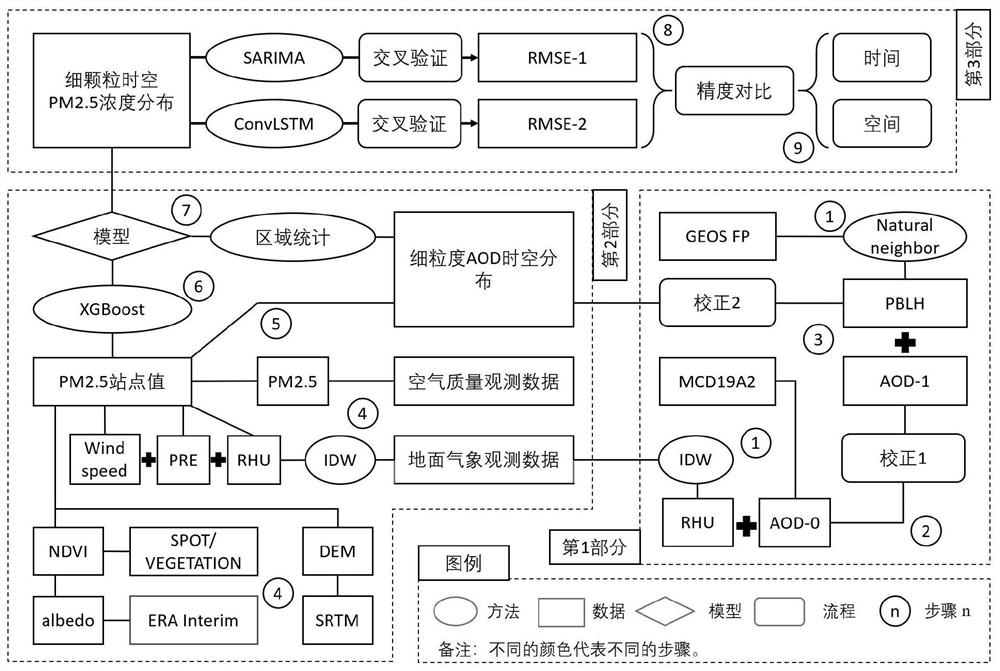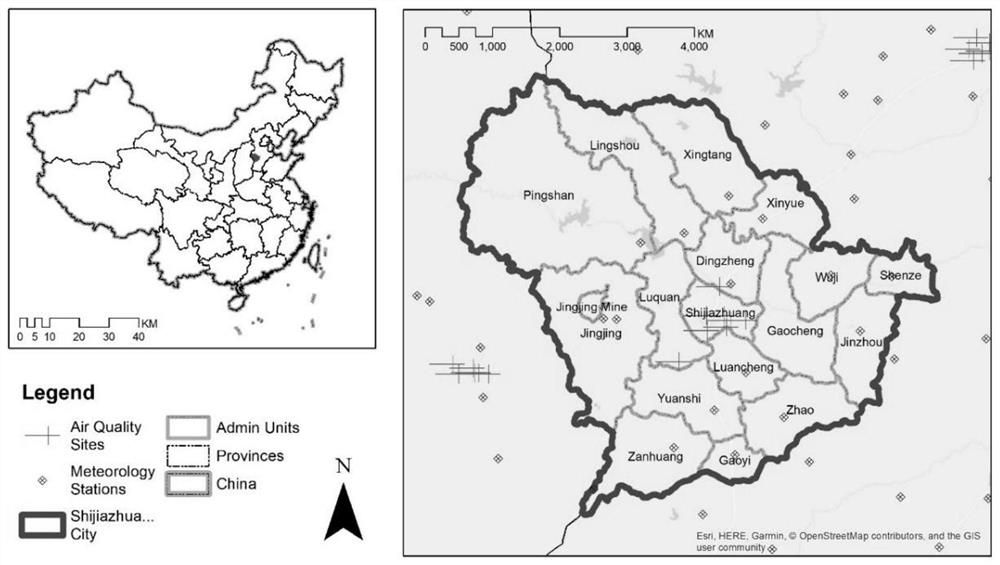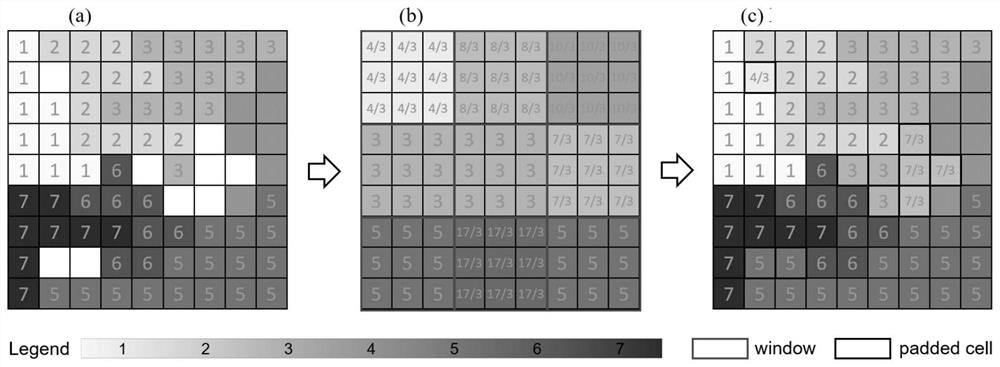Space-time estimation and prediction method for PM2.5 concentration distribution
A concentration distribution, space-time technology, applied in the environmental field, can solve problems such as long residence time, small diameter of PM2.5, and influence on atmospheric visibility
- Summary
- Abstract
- Description
- Claims
- Application Information
AI Technical Summary
Problems solved by technology
Method used
Image
Examples
Embodiment Construction
[0031] The following examples can enable those skilled in the art to understand the present disclosure more fully, but do not limit the present disclosure in any way.
[0032] The concentration of PM2.5 is affected by the topography, emission location, emission rate and meteorological factors in the study area, and has strong nonlinear characteristics. At the same time, there is a potential interdependence between the observed values of PM2.5 in the same distribution area. .5 There is a certain spatial autocorrelation among the variables. In order to improve the prediction accuracy of PM2.5 and ensure the reliability of the algorithm, this paper adopts the convolutional long-term short-term memory (ConvLSTM) model and the improved long-term short-term memory (LSTM) model, and adds convolution operation to the LSTM model to extract spatial features. Predict the temporal and spatial distribution of PM2.5 PM2.5 for the next day or next day.
[0033]When studying and predicting...
PUM
 Login to View More
Login to View More Abstract
Description
Claims
Application Information
 Login to View More
Login to View More - R&D
- Intellectual Property
- Life Sciences
- Materials
- Tech Scout
- Unparalleled Data Quality
- Higher Quality Content
- 60% Fewer Hallucinations
Browse by: Latest US Patents, China's latest patents, Technical Efficacy Thesaurus, Application Domain, Technology Topic, Popular Technical Reports.
© 2025 PatSnap. All rights reserved.Legal|Privacy policy|Modern Slavery Act Transparency Statement|Sitemap|About US| Contact US: help@patsnap.com



